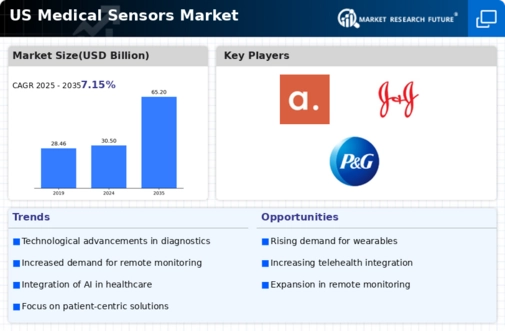US Medical Sensors Market Summary
The US Medical Sensors market is poised for substantial growth, projected to reach 65.2 USD billion by 2035 from 30.5 USD billion in 2024.
Key Market Trends & Highlights
US Medical Sensors Key Trends and Highlights
- The US Medical Sensors market is valued at 30.5 USD billion in 2024 and is expected to grow to 65.2 USD billion by 2035.
- The market is anticipated to experience a compound annual growth rate (CAGR) of 7.15 percent from 2025 to 2035.
- Increasing technological advancements in medical sensors are likely to drive market expansion significantly.
- Growing adoption of telehealth solutions due to rising demand for remote patient monitoring is a major market driver.
Market Size & Forecast
| 2024 Market Size | 30.5 (USD Billion) |
| 2035 Market Size | 65.2 (USD Billion) |
| CAGR (2025 - 2035) | 7.15% |
Major Players
Apple Inc (US), Microsoft Corp (US), Amazon.com Inc (US), Alphabet Inc (US), Berkshire Hathaway Inc (US), Meta Platforms Inc (US), Tesla Inc (US), Johnson & Johnson (US), Visa Inc (US), Procter & Gamble Co (US)













